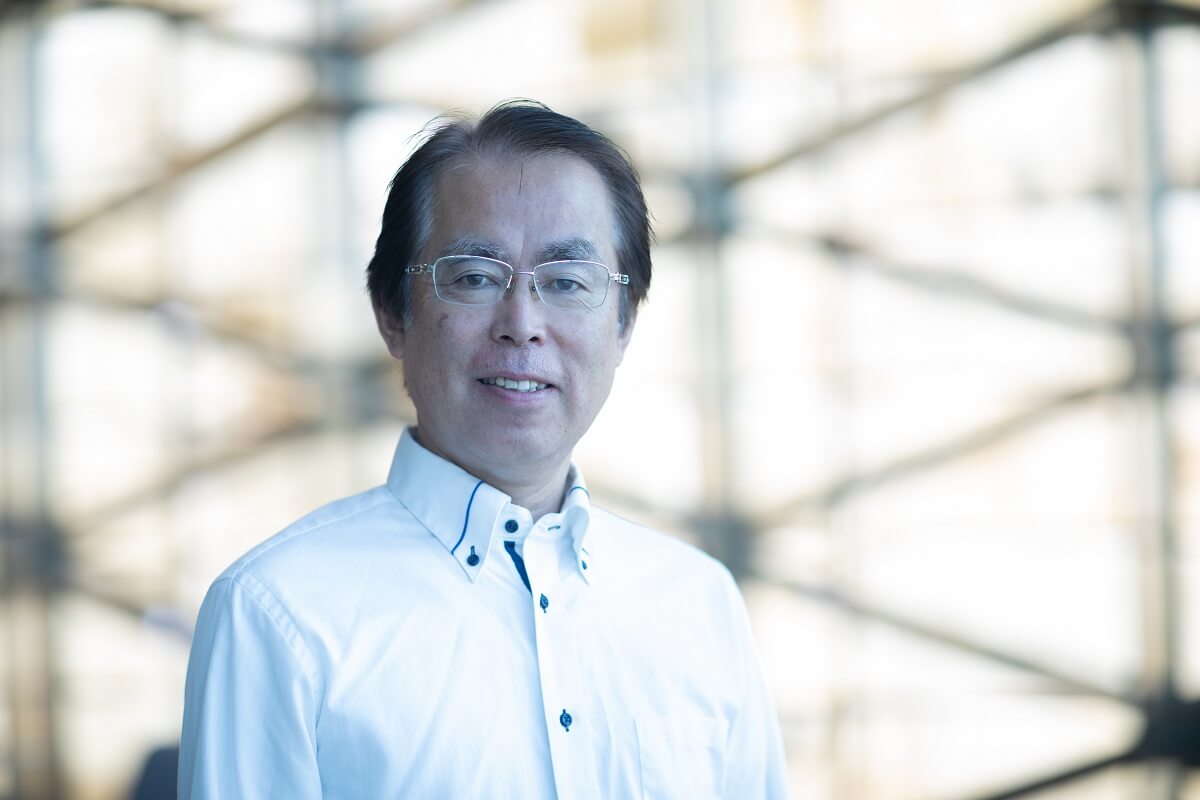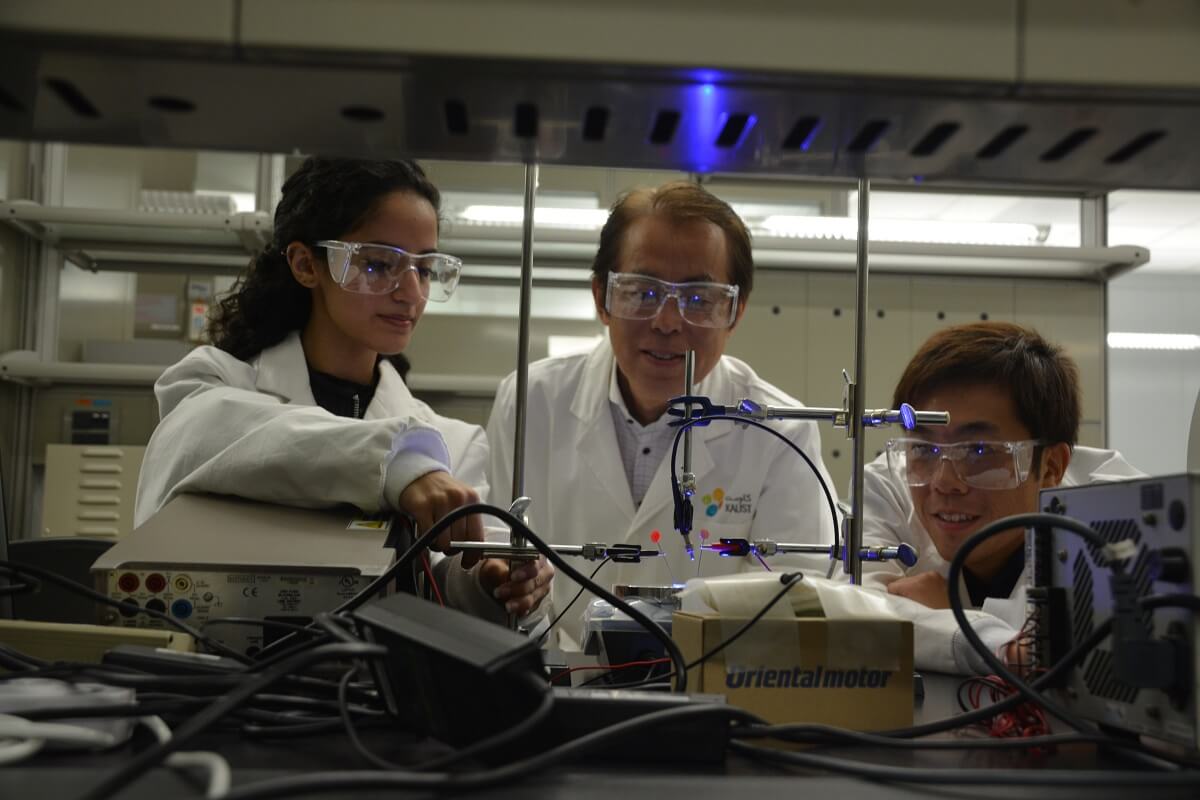- Alumni (88)
- Announcement (15)
- Community (5)
- COP16 (7)
- Enrichment Programs (74)
- Events (66)
- Faculty Focus (104)
- Features (135)
- Innovation (79)
- KAUST Discovery (7)
- News (517)
- Press Release (114)
- Research (130)
- Smart Health (5)
- Students (113)
- WEP (30)
KAUST Professor Kazuhiro Ohkawa elected Fellow of the Japan Society of Applied Physics

KAUST Professor Kazuhiro Ohkawa was recently elected as a Fellow of the Japan Society of Applied Physics (JSAP). He will receive the award in September during the JSAP’s Autumn 2019 Meeting in Hokkaido, Japan. File photo.
By David Murphy, KAUST News
KAUST Professor of Electrical Engineering Kazuhiro Ohkawa was recently elected as a Fellow of the Japan Society of Applied Physics (JSAP). The JSAP was established in 1930 as a voluntary forum for applied physics researchers in the country.
Ohkawa's JSAP peers recognized him for his exceptional contributions to the progression of applied physics and his specific contribution to the "development of wide bandgap semiconductor epitaxial growth and optical devices," JSAP stated.
"It is a great honor for me to be elected as a Fellow of the JSAP," Ohkawa noted. "The Fellowship Award Ceremony will be held as part of the JSAP's Autumn 2019 Meeting. There will be approximately 6,000 participants at the conference. Therefore, it will be a wonderful opportunity for KAUST to promote its reputation to those in Japanese academia."
Contributions to the field of applied physics
Ohkawa's research interests at KAUST focus on the device application of energy-conversion phenomena toward a more sustainable future. As someone who refined the metalorganic vapor-phase epitaxy technique, the highly regarded researcher stated that he first became aware of his contributions to the field of applied physics when he saw how other institutes and industry were utilizing his research.
"I realized my contribution to the field of applied physics when I saw some other institutes [and] companies using the technologies I developed," Ohkawa noted. "In this regard, there are three contributions for my case: the first is doping technologies for II-VI compounds to realize n- and p-types. Those are generally used as the current technologies. Notably, the nitrogen plasma source for the p-type has become the standard technology for MBE [molecular beam epitaxy] growth of nitride semiconductors.
"The second is metalorganic chemical vapor deposition (MOCVD) technology for nitride semiconductors. The technology has developed indium gallium nitride-based RGB full-color LEDs and made it possible to study MOCVD reactors scientifically. The third is the invention of [a] nitride photocatalyst for water splitting and artificial photosynthesis."
"Over 30 industries in Japan, France, Germany, China and Korea have introduced some of those three ideas into their R&D and businesses. It is excellent that our basic academic research can change the world through industries," he continued.

KAUST Professor of Electrical Engineering Kazuhiro Ohkawa (center) works in the lab with two students on the KAUST campus. At the University, he is the principal investigator of the Energy Conversion Devices and Materials (ECO Devices) Laboratory. File photo.
A focus on semiconductor physics
Ohkawa is also the principal investigator of the KAUST Energy Conversion Devices and Materials (ECO Devices) Laboratory. The lab's research topics fall into two main areas: energy-saving devices such as LEDs and laser diodes for new markets and clean energy-evolution systems such as photocatalysis and artificial photosynthesis.
"Our lab focuses on the energy field based on semiconductor physics. The research topic of 'energy' is one of the big research fields at KAUST. The mutual energy conversion between photons and electron-hole pairs is the crucial technology," Ohkawa explained.
"I am convinced that KAUST is an excellent place for research because [here] there are many types of scientists, high-performance facilities and some prominent industrial research partners. Since Saudi Aramco and SABIC are on the KAUST campus, their researchers and I have many [opportunities] to discuss research topics on energy. The continuously updated facilities of the KAUST Core Labs are quite useful to characterize our materials and devices," he added.
Pursue 'innovative, reliable and useful' science and technology
It was during his time working at Panasonic's Central Research Laboratories that Ohkawa invented n-type and p-type doping methods for zinc selenide.
"[Looking back,] I want to advise young Kazuhiro not to hesitate to commercialize his technology—another company commercializes [it] eventually. Commercialization is the final destination of research and development," he noted.
On a daily basis, Ohkawa encourages his students to approach their research as a bridge that seeks to combine academia and industry.
"Every company is looking for innovative ideas. Good ideas exist in published papers. However, most of the technologies in the papers are not useful for companies. Therefore, we must pay attention to the reliability of our research," he said. "I encourage my students to create new ideas, but [I also] advise them to be pessimistic about their idea[s] during research. If you are always optimistic about your idea[s], you look like a prominent scientist until mistakes occur. I think that a pessimistic mind is important so as to be reliable scientists and to survive in academia."
"I...advise KAUST students studying electrical engineering to pursue innovative, reliable and useful—the word 'iru' in Japanese means 'necessary'—science and technology. The first step in this process is the R&D of innovative and reliable ideas. The second step is to challenge the commercialization of your ideas. Then, your innovative, reliable and useful ideas become necessary for our society," he concluded.
Related stories:
- KAUST Associate Professor Jr-Hau He wins Nano Energy Award 2019
- KAUST Professor David Keyes to chair International Supercomputing Conference 2020
- KAUST Associate Professor Andrea Fratalocchi's research leads to Institute of Physics Fellowship
-
KAUST Professor J. Carlos Santamarina and postdoctoral fellow Junghee Park receive 2019 Tarek Al-Kasabi Award for Excellence in Civil Engineering in Saudi Arabia

